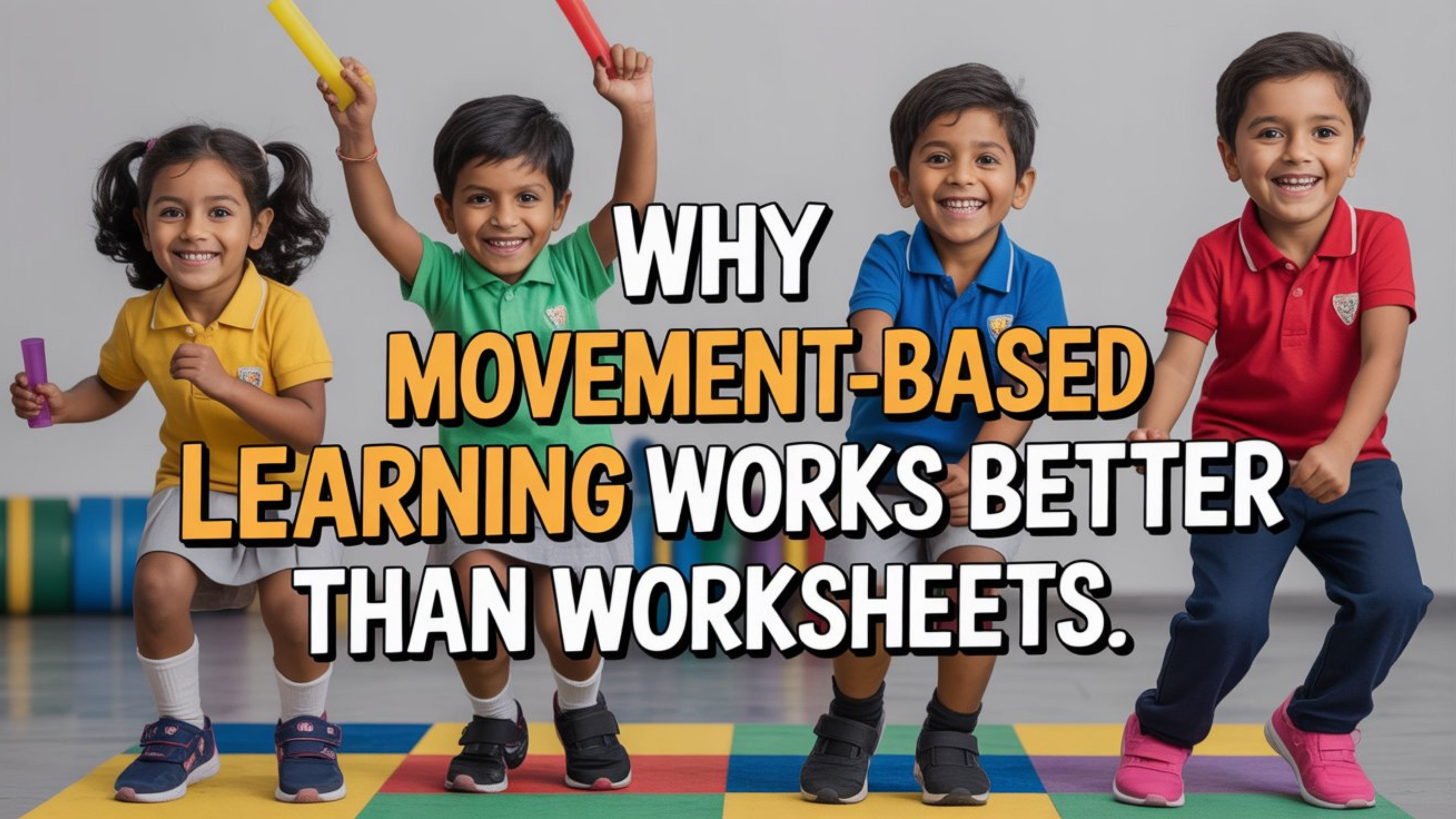When we think about learning, the first image that comes to mind is usually children sitting at a desk with books, pencils, or worksheets. While worksheets have their place, research shows that movement-based learning is far more effective, especially in the early years.
Children are naturally active learners. They explore the world through touch, play, and motion. This is why hands-on learning for kids and sports-based education are rapidly gaining attention among educators and parents. The truth is simple: children learn best when they move.
What is Movement-Based Learning?
Movement-based learning is an approach that combines physical activity with academic and life skills. Instead of relying only on worksheets or rote memorization, it uses games, sports, role play, and physical activities to reinforce concepts.
Examples include:
-
Learning numbers by hopping across numbered mats.
-
Practicing coordination through catching and throwing games.
-
Exploring science concepts through balancing, running, or obstacle activities.
This method engages the body, brain, and emotions, making learning more enjoyable and effective.
Why Worksheets Alone Are Not Enough
Worksheets are often repetitive and limit creativity. They focus mostly on sitting still, memorizing, and writing. For young children, this can:
-
Reduce concentration after a few minutes.
-
Make learning feel like a chore instead of fun.
-
Neglect physical, social, and emotional development.
On the other hand, hands-on learning kids activities provide real experiences that stick in memory for longer.
Benefits of Movement-Based Learning
1. Better Retention & Understanding
When kids move while learning, they use multiple senses. Jumping while counting or role-playing while reading stories creates stronger brain connections than simply filling out a worksheet.
2. Improved Focus & Attention
Movement breaks increase blood flow and oxygen to the brain. This helps children stay alert, focused, and less restless in class.
3. Builds Life Skills
Unlike worksheets, sports-based activities build teamwork, discipline, patience, and problem-solving abilities—skills that matter in everyday life.
4. Encourages Creativity
Movement allows children to express ideas in unique ways. For example, acting out stories through dance or sports exercises combines imagination with physical learning.
5. Supports Different Learning Styles
Not all kids learn the same way. Some are visual learners, others are kinesthetic. Movement-based learning caters to different styles, ensuring every child benefits.
Sports-Based Education: Learning Beyond the Classroom
At institutions like Nahata Sports, learning goes beyond academics. Sports-based education integrates physical activity with mental and social growth. Children learn:
-
Math concepts through measuring distances in games.
-
Science principles like force and motion through sports drills.
-
Language skills by storytelling combined with role-play movements.
This type of education doesn’t just teach—it transforms learning into an adventure.
Hands-On Learning at Home
Parents can also support hands-on learning at home. Simple activities make a big difference:
-
Use kitchen tools for measuring and pouring while teaching numbers.
-
Let kids act out animal movements while learning about wildlife.
-
Create scavenger hunts that teach colors, shapes, or letters.
These activities engage both the body and brain, making lessons memorable.
Why Pune Parents Are Choosing Movement-Based Learning
More schools and academies in Pune are offering sports-based education because parents recognize its long-term benefits. Instead of sitting for hours with worksheets, children stay active, healthy, and intellectually sharp.
At Nahata Sports, for example, programs are designed to combine fitness with learning, ensuring kids build strong bodies while excelling academically.
Conclusion
Movement-based learning is not just a trend—it’s a necessity. While worksheets may practice repetition, they can never match the benefits of hands-on learning and sports-based education.
By encouraging kids to learn through play, motion, and real experiences, we prepare them to be not only smarter students but also confident, creative, and well-rounded individuals.
So next time you see a worksheet, ask yourself: could this be taught better through movement? The answer is almost always yes.

